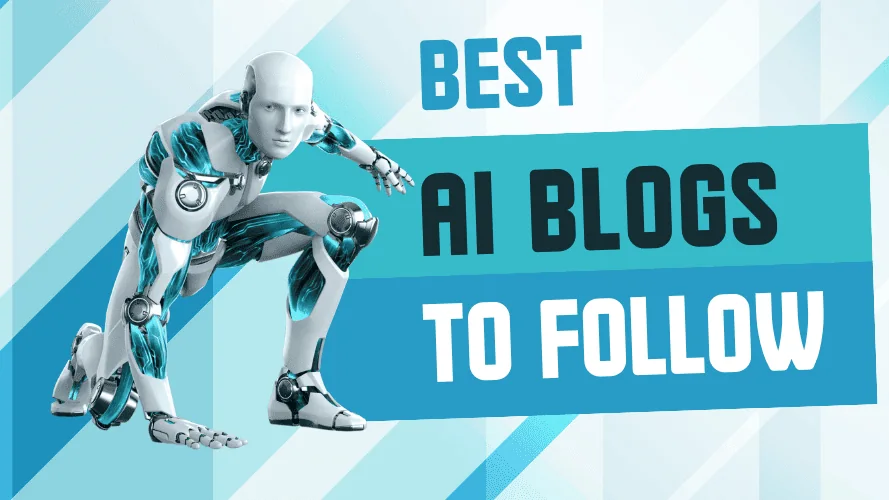In the ever-evolving digital landscape, one term consistently stands out as a cornerstone of online presence and content sharing: blogging. More than just a casual online diary, blogging in 2025 has matured into a powerful tool for communication, personal branding, business growth, and even a significant source of income. If you’ve ever wondered, “What exactly is blogging?” and how it works, this comprehensive guide will demystify the concept, explore its myriad benefits and considerations, and equip you with the knowledge to embark on your own blogging journey.
At its core, blogging refers to the act of creating and managing a blog. But what exactly is a blog? The term itself is a contraction of “weblog,” an online journal or informational website displaying information in reverse chronological order, with the latest posts appearing first. A blog is a dynamic website where individuals or groups regularly publish written content, often referred to as blog posts. These posts can cover an incredibly diverse range of topics, from deeply personal reflections and expert opinions to in-depth tutorials, product reviews, news analyses, and creative storytelling.
A blogger is the individual or team responsible for writing, publishing, and managing the content on a blog. They are the voice behind the ideas, sharing their experiences, knowledge, and perspectives with a global audience. The role of a blogger extends beyond just writing; it often encompasses aspects of editing, Search Engine Optimization (SEO), content promotion, and community engagement.

The Evolution of Blogging: From Online Diaries to Digital Powerhouses
Blogging has come a long way since its inception in the late 1990s. Initially, blogs were primarily simple, personal online journals, offering individuals a platform to share their daily thoughts or niche hobbies. As internet accessibility grew and content management systems (CMS) became more user-friendly, blogging began to transform.
The early 2000s saw a surge in political blogs, news commentary sites, and specialized interest blogs, demonstrating the medium’s potential for influence and community building. The rise of social media further propelled blogging, as platforms like Facebook and Twitter became powerful channels for content distribution and audience engagement.
Today, blogging is a sophisticated ecosystem. It’s no longer just about personal expression; it’s a vital component of digital marketing strategies for businesses of all sizes, a thriving career path for content creators, and a rich source of information for readers worldwide. The advent of AI tools, like ChatGPT and Bard, is also beginning to reshape how content is researched, drafted, and optimized, making the process more efficient while still emphasizing the importance of human insight and creativity.
Blog vs. Website: Understanding the Distinction
While all blogs are websites, not all websites are blogs. This distinction is crucial for understanding the nature of blogging.
- Website: A broad term referring to a collection of related web pages, images, videos, and other digital assets, typically accessible via a single domain name. Websites can serve many purposes: e-commerce, portfolios, corporate information, online applications, and more. Their content can be static or dynamic.
- Blog: A specific type of website characterized by regularly updated, often informal, journalistic-style content presented in reverse chronological order. The primary function of a blog is typically content publishing and audience engagement through comments and shares.
The key difference lies in the emphasis on continuous, fresh content. A corporate website might have static “About Us” or “Services” pages that rarely change, whereas a blog’s value comes from its constant stream of new blog posts. Many modern websites integrate a “blog” section to leverage the benefits of regular content creation alongside their static pages.
How Does Blogging Work? The Mechanics Behind the Scenes
The process of blogging, while seemingly complex, can be broken down into several key components:
- Platform Choice: To start a blog, you need a blogging platform like wordpress.org). These are essentially software or services that allow you to create, publish, and manage your blog content without needing to write complex code. Popular platforms include WordPress (both self-hosted WordPress.org and hosted WordPress.com), Blogger, Squarespace, and Wix. Each offers different levels of control, customization, and ease of use.
- Domain Name and Hosting: For a self-hosted blog (like Hostinger.com), you’ll need to purchase a domain name (your website address, e.g., “https://www.google.com/search?q=yourblogname.com”) and web hosting (the service that stores your blog’s files and makes them accessible on the internet). Hosted platforms typically bundle these services.
- Content Creation: This is the heart of blogging. It involves researching topics, outlining, writing, editing, and formatting your blog posts. Effective content is well-researched, engaging, informative, and provides value to the reader.
- Publishing: Once a post is ready, it’s published to your blog, instantly becoming accessible to your audience.
- Promotion: Simply publishing isn’t enough. Bloggers actively promote their content through various channels, including social media, email newsletters, and particularly through SEO.
- Audience Engagement: Blogs are often interactive. Readers can leave comments, ask questions, and share posts, fostering a sense of community.
What is a Blog Used For? The Multifaceted Purposes of Blogging
Blogging serves a wide array of purposes for individuals and businesses alike:
- Sharing Ideas and Knowledge: At its core, blogging is about disseminating information. Whether it’s personal experiences, expert insights, or tutorials, blogs provide a platform for sharing thoughts and expertise with a broad audience.
- Building a Personal Brand: For individuals, a blog can be a powerful tool for establishing credibility and authority in a specific niche. Consistent, high-quality content helps position the blogger as an expert, leading to opportunities like speaking engagements, consulting, or media appearances. This is crucial for personal branding.
- Driving Website Traffic: For businesses, a blog is an indispensable content asset for attracting visitors to their website. By publishing valuable content that addresses their target audience’s questions and needs, businesses can draw organic traffic through search engines (SEO).
- Generating Leads and Sales: The traffic driven by blogging can be converted into leads and customers. Blog posts can strategically guide readers toward products, services, or lead capture forms, making blogging a key component of the sales funnel.
- Monetization: Many bloggers earn income directly from their blogs. Common monetization strategies include:
- Advertising: Displaying ads on the blog.
- Affiliate Marketing: Promoting other companies’ products or services and earning a commission on sales made through unique tracking links.
- Selling Own Products/Services: Creating and selling digital products (eBooks, courses) or physical goods directly to their audience.
- Sponsored Content: Collaborating with brands to publish sponsored posts or reviews.
- Community Building: Blogs foster interaction. The comments section, combined with social media promotion, allows bloggers to connect with their audience, build a loyal following, and create a community around shared interests.
- Skill Development: Blogging pushes individuals to hone various skills, including writing, research, editing, SEO, graphic design, social media marketing, and even basic web development.
Different Types of Blogs: A World of Niches
The beauty of blogging lies in its versatility. There’s a blog for almost every conceivable interest or purpose. Some common types include:
- Personal Blogs: Often serving as online diaries or reflections on daily life, hobbies, and personal experiences.
- Niche Blogs: Highly focused on a specific topic or niche, such as “weight loss,” “parenting tips,” “sustainable living,” or “tech reviews.” These blogs often attract dedicated audiences looking for specialized information.
- Travel Blogs: Documenting journeys, offering travel tips, destination guides, and inspiring narratives.
- Lifestyle Blogs: Covering a broad range of topics related to daily living, including fashion, beauty, home decor, food, and personal development.
- Food Blogs: Sharing recipes, cooking techniques, restaurant reviews, and culinary adventures.
- Health and Wellness Blogs: Providing information on fitness, nutrition, mental health, and overall well-being.
- Business/Corporate Blogs: Used by companies to share industry news, company updates, thought leadership articles, and valuable content for their customers.
- Fashion Blogs: Focused on style, trends, outfit ideas, and beauty product reviews.
- Finance Blogs: Offering advice on personal finance, investing, saving, and wealth management.
- Parenting Blogs: Providing tips, advice, and shared experiences for parents.

The Pros and Cons of Blogging: Weighing Your Options
Like any endeavor, blogging comes with its own set of advantages and disadvantages.
Pros of Blogging:
- Low Barrier to Entry: Starting a blog can be relatively inexpensive and doesn’t require advanced technical skills, thanks to user-friendly platforms.
- Flexibility: Bloggers often have the flexibility to work from anywhere, set their own hours, and choose their topics.
- Scalability: A successful blog can grow significantly in terms of audience, content volume, and income potential.
- Authority and Credibility: Consistent, quality content builds trust and positions the blogger or business as an authority in their field.
- Passive Income Potential: Once established, a blog can generate passive income through advertising, affiliate marketing, or product sales.
- Skill Enhancement: It provides a continuous learning curve for writing, marketing, and technical skills.
- Networking Opportunities: Blogging connects you with other content creators, industry experts, and your audience.
Cons of Blogging:
- Time and Effort Intensive: Building a successful blog requires significant time for content creation, promotion, and engagement. Consistency is key.
- High Competition: The blogging landscape is crowded. Standing out requires unique content, strong SEO, and effective marketing.
- Delayed Gratification: It often takes months, or even years, to build a substantial audience and generate significant income.
- Technical Challenges: While platforms simplify things, occasional technical issues, security concerns, or customization needs can arise.
- Monetization Challenges: Earning substantial income often requires large traffic volumes or strategic product/service offerings.
- Constant Learning Curve: The digital world is always changing, requiring bloggers to continuously learn about new SEO techniques, platform updates, and marketing strategies.
- Vulnerability to Algorithm Changes: Changes in search engine algorithms can impact organic traffic overnight.
Getting Started: A Quick Checklist for Aspiring Bloggers
If you’re ready to dive into the world of blogging, here’s a quick checklist to get you started:
- Define Your Niche: What specific topic or area will your blog focus on? A clear niche helps attract a targeted audience and makes content creation easier.
- Choose a Blogging Platform: Select a platform that aligns with your technical comfort level, budget, and long-term goals. WordPress.org is often recommended for serious bloggers due to its flexibility.
- Select a Domain Name and Hosting: Your domain name should be memorable, relevant, and easy to spell. Choose a reliable hosting provider.
- Plan Your Content Strategy: Brainstorm initial blog post ideas. Consider what problems you can solve for your audience or what questions you can answer.
- Learn SEO Basics: Understand how to research keywords, optimize your content for search engines, and build backlinks to improve your blog’s visibility.
- Create High-Quality Content: Focus on providing value. Your posts should be well-written, informative, engaging, and unique. You can use AI tools like RightBlogger for the same.
- Be Consistent: Regular publishing helps maintain audience interest and signals to search engines that your blog is active and relevant.
- Promote Your Content: Share your blog posts on social media, through email newsletters, and by engaging with other bloggers in your niche.
- Engage with Your Audience: Respond to comments, ask questions, and foster a sense of community around your blog.
- Analyze and Adapt: Use analytics tools to understand what content performs well and how your audience interacts with your blog. Use these insights to refine your strategy.
Conclusion: Blogging in 2025 and Beyond
Blogging in 2025 remains a vibrant and powerful medium. It’s a dynamic space where anyone can share their voice, build an audience, establish authority, and even generate a significant income. While it demands dedication, consistent effort, and a willingness to learn, the rewards—from personal fulfillment to financial independence—can be substantial. Whether you aim to share your passion, grow a business, or simply connect with others who share your interests, understanding “What is blogging?” is the first step toward unlocking a world of digital possibilities. The journey of a thousand blog posts begins with a single idea, so why not start writing yours today?

